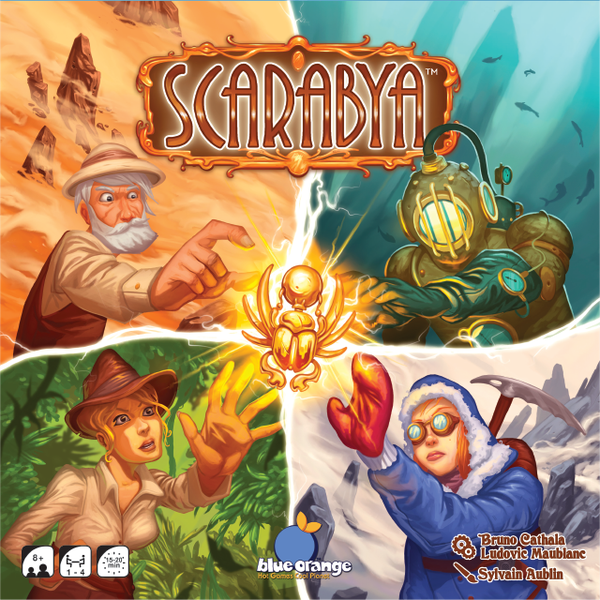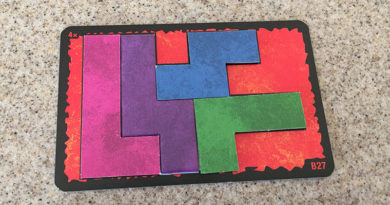Building Cows and Making Faces
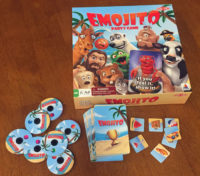
Our first set of kids game reviews this week each had some elements of math to them.
Today we’re leaving the math behind and moving on to silly fun.
We’ll first head out to pasture and build some cows, then it’s on to silly faces and sounds.
Long Cow
As Gamewright says, “Long Cow is the moo-mentous card game of competitive cattle construction.” In the card game, 2-5 players compete to grow the largest herd filled with the longest cows. They do so by playing cards of cow parts to make cows of different types and lengths while playing attack cards on their opponents.
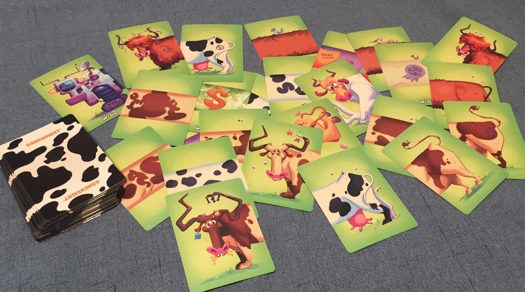
Players each begin with a hand of 6 cards and on their turn can either draw 2 cards from the draw deck or 1 cow part card from anywhere in the discard pile. Then they can play as many cards as they want from their hand. (This can also be 0 cards played from their hand if they choose though there’s a hand limit of 10 cards.)
There are 3 types of cows and there are 3 different body part cards (head, middle, tail). To play a cow to their herd, a player must have at least a head, middle, and tail card of the same cow type in their hand. But they can play as many middle sections of that cow type as they’d like to make it as long as possible.
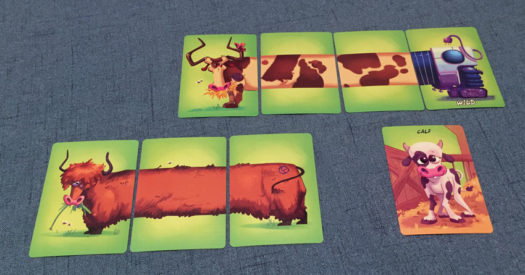
There are also Wild cow body parts in the deck which can be combined with any type of cow. The wild cow parts can be played when a cow is initially created or added to an already played cow in a player’s herd when combined with a food card.
In addition to cow parts cards, there are also Calf cards which can only be played once a player has built at least one adult cow.
There are also numerous special cards that mix things up a bit.
Cross-breed cards let you mix cow parts from different types of cards. Food cards let you add more middle sections to already played cows. Attack cards are played toward opponents to remove middle sections, calves, or complete cows. Defense cards are used to defend against attacks (either preventative or immediate). And there are other cards that also let players steal cards or take an extra turn.
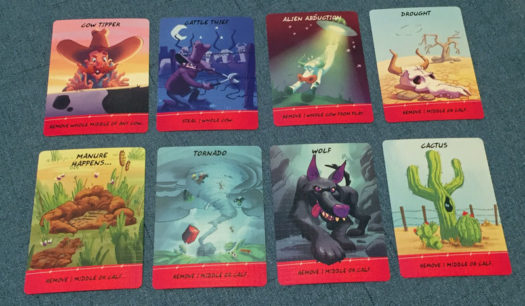
During play, the first player to play a cow gets the First Cow award (worth 1 point). The player with the most cows in their herd gets the Biggest Herd award (2 points). But this one can be claimed by another player if they surpass that amount during play. Likewise, the Longest Cow award (3 points) goes to the player with the longest cow (minimum size of 5 cards) and can also be claimed by another player if they surpass the length.
After the last card is drawn from the deck, everyone gets one final turn to play cards from their hand then the game ends.
Each cow part in their herd is worth 1 point. Each calf is worth 1 point. And the awards are worth their stated points. The person with the most points wins!
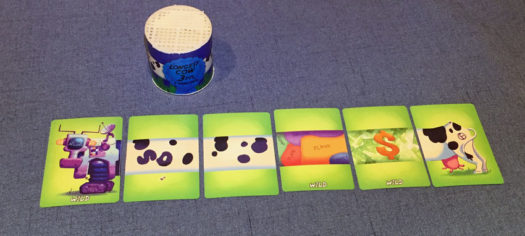
As you can see, Long Cow is a very simple set-collection, kids card game with super cute artwork. It’s fun trying to build long cows and watch your herd grow during the game. And mixing in Wild cards makes the cows look even sillier, which kids love.
There are only 90 cards in the deck and you only play through the deck once. So even though players can draw cow part cards from the discard pile, the game is very quick to play. Player turns goes fast because they just draw cards and play any cards they want from their hand.
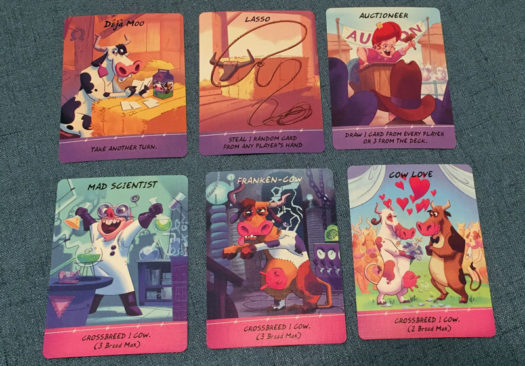
It’s a luck-driven game because so much depends on what cards you draw. But there are some simple choices during play as well.
For example, should you build a cow as soon as you have the minimum number of body parts of that type and hope to grow it later with food? Or should you hold out for more body parts before you play the cow? With a hand limit of only 10 cards and the possibility that another player may steal cards from your hand, you may opt to play sooner rather than later.
And some of those choices may change depending on which cards have already been played. There are 16 cards for each cow type in the deck (5 head, 6 middle, 5 tail) and 8 Wild body parts (2 head, 4 middle, 2 tail). Knowing that, players can anticipate the amount and size of cows they may be able to build.
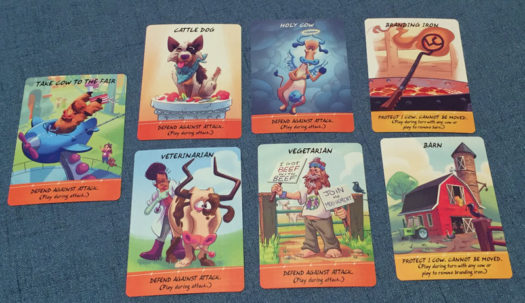
There are also only 7 calf cards and 6 food cards. So players can make educated guesses about the likelihood of being able to lengthen a cow with food during play. There are also 8 attack cards, 7 defense cards, and 6 special cards in play.
Overall, Long Cow is a fun little romp of building, feeding, attacking and defending you herd of cows on your way to building the herd with the most points. It’s simple and quick and silly. And it might be a game your kids will love to play.
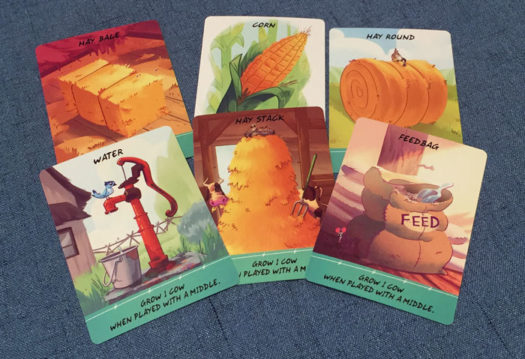
Emojito
Emojito is a game where 2-7 players make facial expressions and sounds to help the other players guess what emotions they’re trying to portray. And it can be trickier than you think.
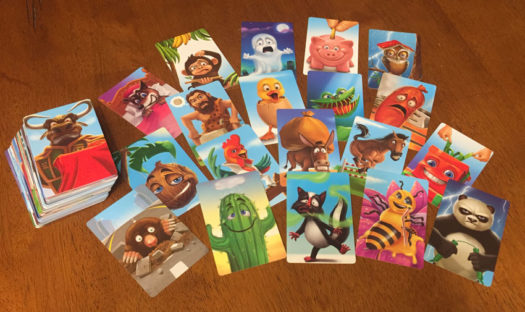
To begin, each player takes a Guessing Dial and chooses a playing token which they put on the #1 space of the central board. On a player’s turn, they draw the top card of the deck and act out the emotion on the card depending on the symbol of the space where their token is.
The 7 spaces on the board are either facial expression, sound, or both facial expression and sound.
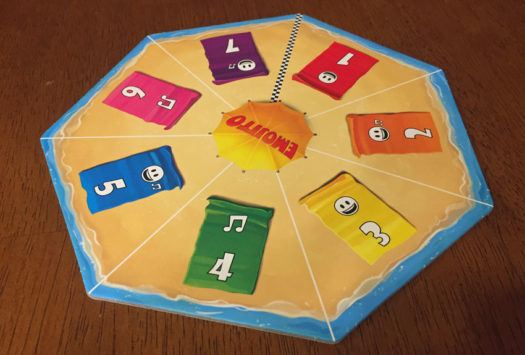
Once they have made their face, sound, or both, they draw 6 more cards from the deck, shuffle them with the card they just acted out and then place them all face up around the central board so that each card is next to a number space. All the other players then try to guess which card the active player was trying to portray. They use their Guessing Dial to indicate the number related to that card.
When everyone is ready, players reveal their guess and the active player reveals the correct card. For each correct guess, the active player scores 2 points up to a maximum of 6 points for that turn. Players who guessed correctly each get 3 points. Players move their playing token that many spaces on the board. When a player passes the checkered line, they take a card as a trophy.
The game ends when one player has collected their 5th trophy card. That player is the winner.
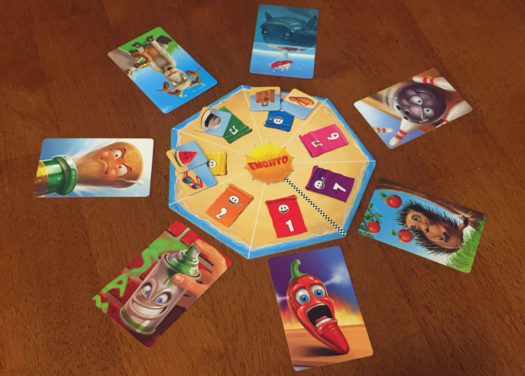
Players can also choose to play cooperatively if they’d like. When playing with just 2 players, this is really the only way to play. The game play is the same with players alternating between making the faces and guessing the card. When guessed correctly, the players move their joint token ahead one space. When they’re wrong, they move the “game’s” token ahead one space.
The cooperative rules say that players also play until one playing pieces has gone around the board 5 times. But we think that’s way too long for this game. The reason is that in a regular game players move multiple spaces when they guess correctly (the active player may even move up to 6 spaces on their turn). Thus going around the 7 space board 5 times (35 spaces total) when you’re moving multiple spaces works out fine. If you’re a fantastic guesser, that’s around 11 game rounds.
But in a cooperative game, where you only move 1 space for a correct guess, you’ll have to make 35 correct guesses to finish the game. If you guess wrong, the game piece moves. This means at the minimum you’ll have to play 35 game rounds. With a deck of 100 cards where 7 are played out each round, you’ll go through the deck many times.
So our recommendation when playing cooperatively is to only go around the board 2 or 3 times.
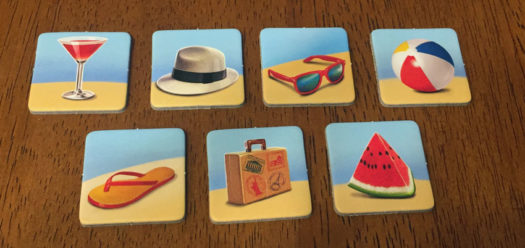
Outside of that note regarding cooperative play, Emojito is a fun and silly game.
You might think making the expressions or sounds depicted on the cards is easy to do and guess. But that’s not the case. With 100 cards of various faces, many of the expressions can be very similar. And depending on which cards are drawn to go up against the actual card, the guessers may have a hard time choosing the correct one.
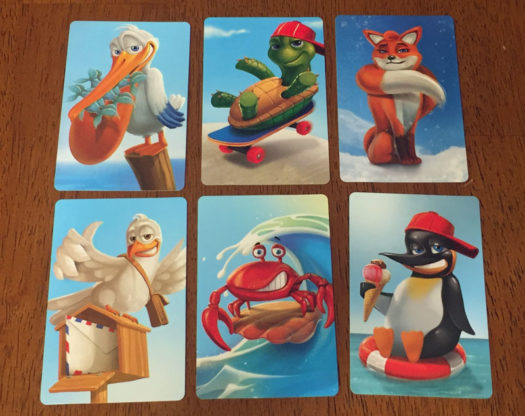
And that’s what we think makes the game fun. If a player drew all 7 cards first, then chose one to express, it would make guessing easier. But since the active player only sees the one card they need to portray before seeing what it’s up against, it keeps the game engaging.
There’s also no doubt that kids will love trying to mimic all these crazy faces of animals and other characters (like a lolipop and genie).
While we’re reviewing Emojito as part of our kids games reviews this week, you may also enjoy playing it as a party game with adults. If you want a light, simple, and silly game for your next party, you may want to give Emojito a try.
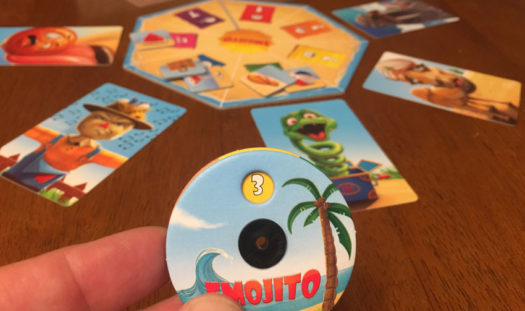
We’d like to thank Gamewright and Griddly Games for providing review copies of Long Cow and Emojito.



